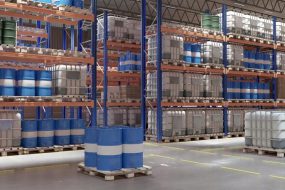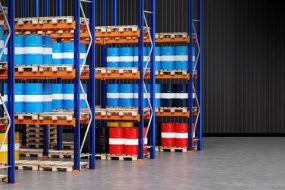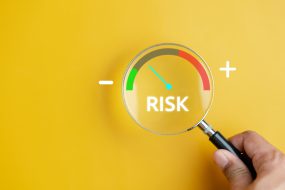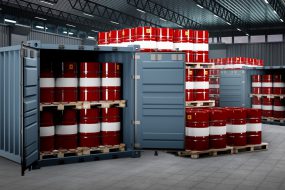

When it comes to shipping dangerous goods, it’s far more than just moving items from point A to point B—there’s a great deal at stake. Ensuring the safety of people and the environment, maintaining regulatory compliance, and protecting your brand’s reputation are all critical. With fluctuating international courier charges and complex logistics, keeping up with evolving regulations is essential for any business handling hazardous materials.
Why dangerous goods regulations matter
Staying compliant with global regulations is non-negotiable if your businessships hazardous materials. Here’s why regulatory adherence is essential:
- Protect people and the environment: Strict safety protocols safeguard everyone involved in the shipping process—from handlers to the general public—and minimise environmental impact.
- Avoid legal complications: Adhering to regulations helps avoid costly fines, potential shipping restrictions, and legal issues that could disrupt operations.
- Preserve your brand reputation: Proper handling and compliance demonstrate reliability, build trust with customers and partners, and strengthen your business’s standing in regulated markets.
Investing in regulatory compliance isn’t just about following rules—it’s a commitment to safety, sustainability, and long-term business success.
The cost of ignoring compliance
Overlooking these regulations isn’t just risky—it can be expensive and damaging in many ways:
- Legal and financial consequences: Non-compliance can lead to heavy fines, unexpected legal costs, or bans. For instance, OSHA fines serious violations up to$16,131 per violation, which can disrupt supply chains and affect profits.
- Economic consequences: Non-compliance can disrupt supply chains, increase oversight, and raise costs for businesses handling hazardous materials. Frequent incidents may also harm your competitive edge internationally.
- Environmental and health risks: Mishandling hazardous materials can harm the environment, endanger public health, and lead to costly clean-ups and lawsuits.
Key regulations you must know
Each region and mode of transport has specific rules, all aimed at safe handling and transport. Here’s a breakdown of the main ones:
International Maritime Dangerous Goods (IMDG) code
For anysea freightshipments, the IMDG Code, set by the International Maritime Organisation, lays out key standards:
- Classification: Different types of hazardous goods, such as flammable or toxic materials, fall into specific categories.
- Packaging and labelling: Properly secured containers and clear labelling help prevent accidents.
- Documentation: Precise labelling and essential paperwork keep everyone informed of potential risks.
- Emergency protocols: Instructions on handling accidents keep people and goods safe.
International Civil Aviation Organisation (ICAO) Regulations
Forair shipments, ICAO’sTechnical Instructionsare crucial and include:
- Safety standards: Guidelines not only protect the cargo but also the aircraft, crew, and passengers.
- Uniform rules across borders: Air freight can operate more efficiently with the same standards worldwide.
- Ongoing updates: Regulations are revised every two years, with the latest update in January 2023.
International Air Transport Association (IATA) Dangerous Goods Regulations (DGR)
IATA’s DGR provides additional guidance for air shipping and includes:
- Detailed packing and labelling standards: Instructions ensure that goods are secure and correctly identified.
- Mandatory training: Workers handling dangerous goods need certification.
- Compliance audits: Regular checks maintain consistent and safe operations.
International road and rail regulations
When it comes to land shipments, different regions have their own rules:
- European agreement Concerning the International Carriage of Dangerous Goods by Road (ADR): This agreement outlines safety standards for road transport across Europe.
- Regulations Concerning the International Carriage of Dangerous Goods by Rail (RID): Similar to the ADR, these international standards govern dangerous goods transported by rail.
These ground transport frameworks help makeinternational freight shippingmore transparent by establishing safety rules everyone can understand.
Related article: 8 Facts About Container Ships and Global Shipping Connectivity
Compliance essentials for dangerous goods shipping
Ensuring compliance indangerous goods shippingis more manageable when you focus on these key priorities:
Classification and labelling
Safety and compliance start with getting the classification right. Each hazardous good needs a UN number and a label, ensuring that handlers are fully aware of any risks during transit.
Packaging and documentation
You’ll need approved containers to keep materials secure and leak-proof. Each shipment must include the right paperwork—such as consignment notes—detailing the classification, packaging, and emergency contacts. This paperwork helps speed up customs checks and ensures accountability throughout the shipping process.
Training and certification
Your team needs thorough training in safety procedures and should stay current with regulatory changes. Certification also proves that they know the industry standards for handling dangerous goods.
Safety protocols
Essential safety measures, such as spill containment, restricted access, and emergency response plans, protect everyone involved in the transport process.
Handling regional differences in dangerous goods shipping
While there are global frameworks, each region has its approach. Here’s how you can adapt:
Regional standards
UN Model Regulations offer a base, but many regions add specific rules. For example, Europe uses ADR for road transport and IMDG for sea shipments, while the US follows its Department of Transportation (DOT)guidelines. Knowing the variations helps you build a transport plan that aligns with each region’s rules.
Country-specific rules
Some countries have extra requirements. For example, shippers must comply with theAustralian Dangerous Goods (ADG)Code while shipping hazardous materials to Australia. Beyond the standard UN classification, shippers must ensure that additional paperwork details each item’s chemical composition and potential hazards. Knowing these country-specific details keeps shipments moving smoothly without costly delays or fines.
Best practices to manage compliance
Here’s how to make the compliance of dangerous goods shipping more straightforward and more efficient:
Use technology for compliance tracking
Automation can simplify tasks such as documentation and tracking in real-time. Tools like cloud-based logistics software, electronic data interchange (EDI), and AI-driven solutions give your team more control, allowing them to handle checks and compliance issues quickly.
Partner with experienced forwarders
Working with a seasonedfreight forwardercan help you manage international courier charges and regulatory details. Reputable freight forwarders, likeAramex,offer insights that can make navigating regional compliance easier and help keep shipments moving.
Related article: The Expert Guide to Choosing the Right Warehouse Logistics Partner
Keep up with regulatory changes
The rules are constantly evolving, so staying informed is crucial. Organisations such as the International Chamber of Commerce (ICC), World Trade Organisation (WTO), and regional customs websites provide updates to help you avoid compliance gaps.
Conduct regular risk assessments
Risk assessments are a great way to catch potential compliance issues related to trade sanctions or transport risks. Regular assessments give your team time to respond and keep operations running without hiccups.
Final thoughts
Getting dangerous goods shipping right is about protecting people, the environment, and your business. Following global standards and accounting for regional requirements will ensure a safer and more reliable shipping process. Furthermore, when your business is known for compliant shipping, you build trust with customers and partners, making it easier to navigate the complexities of transporting hazardous materials.
Looking for a partner that can support your business?Contact our team today.




